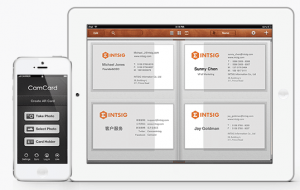
And if you’re anything like me (which I hope you’re not) then you have the memory span of a Goldfish and run the continuous risk of forgetting the name of that person you met just yesterday.
With that in mind, and because I’ve been asked by a number of people what my “event follow-up” routine looks like – here’s my guide on how to effectively deal with business cards.
1. Create Memory Hooks – Write on Business Cards
There’s a real danger that, however interesting the people I meet are, that by the time I’ve left an event (and sometimes before then) I’ve forgotten what their name was or what we talked about. What’s more, however interesting I thought *I* was – when I follow up with that person after the event, they may have forgotten who I am (I know, right?!).
That’s why it makes sense to create some memory hooks, for both you and them. Take a pen to these events (in fact, take a few – they make handy giveaways to win friends) and whenever you receive a business card from someone, on the back of the card make a quick handwritten note of:-
- what you talked about. This is probably business, but it could equally be your shared love of a Sports team, a good book you’ve read recently, or even somebody else you mutually know.
- any commitments you made. There’s no worse way to start a relationship than to casually promise something to someone, then fail to deliver. If you’ve said you’ll send over a link to a blog post on a topic you talked about, write it down. If you’ve said you’ll introduce the person to someone else, make a note of it. Then, make good on your commitment.
2. Scan the Business Card

I use the fantastic tool CamCard to scan business cards and automatically input them into my contact list. CamCard is available for Android and iOS and is actually very strong at OCR (Optical Character Recognition) – and once you’ve scanned the card in, CamCard keeps a handy history of the cards you’ve scanned for when you need a reminder of who you’ve met and where.
Speaking of which, once you’ve scanned the persons contact details into your contact list – make sure to use the “Notes” section to write where you met them and the memory hooks you recorded – what you spoke about, who introduced you, etc. These are invaluable later when you can’t remember somebodies name, but can remember where you met them or what you spoke about.
3. Follow-Up
There’s no point in meeting people, pressing the flesh and exchanging business cards if you don’t follow-up effectively!
If I’ve made a strong connection with somebody, or I’ve made some commitments to them – perhaps an introduction or I’ve said I’ll send them some information – I follow-up with them via email. The email will typically remind the person where we met and what we discussed – remember they may need that memory hook too!
I typically connect with people via LinkedIn in the same way – I avoid using the boiler-plate “Let’s connect on LinkedIn” as I dislike its spammy nature, and instead I send a bespoke connection message, again reminding the person of where we met and perhaps mentioning why we should connect.
Finally, my CRM tool (Nimble CRM) or Rapportive will tell me if that person can also be found on Twitter and Google+. If they can, I often give them a shout-out on those platforms – people love to be seen connecting with people!
4. Be The Connector

For instance, if somebody says they want to improve their LinkedIn profile, I’ll point them towards Michael de Groot. If they are an IT business wanting to improve their Marketing, I’ll suggest they speak with Gemma Telford. I’ve even connected somebody who wanted chewing gum removing from a pavement with someone who specialises in removing chewing gum from pavements. Remember, while you may never do business directly with the person you meet, you may be able to refer them to someone who does. In this way you place yourself at the centre of a network of people – and don’t be surprised when people try to reciprocate and return the favour.
When you go to events, listen to people. Pay attention to what they do and what they say. Sadly, it’s remarkable to do so nowadays – so you’ll stand out from the crowd when you do.
Conclusion
So there you have it – 4 steps to making sure the time you put into attending Conferences, seminars and business networking events is well spent.
It doesn’t have to take much time or effort, but by having a repeatable system in place, you can effectively deal with business cards quickly, grow your network effectively and build relationships with the people who can help you make a difference.
photo credit: bargainmoose via photopin cc
photo credit: SalFalko via photopin cc















Comments